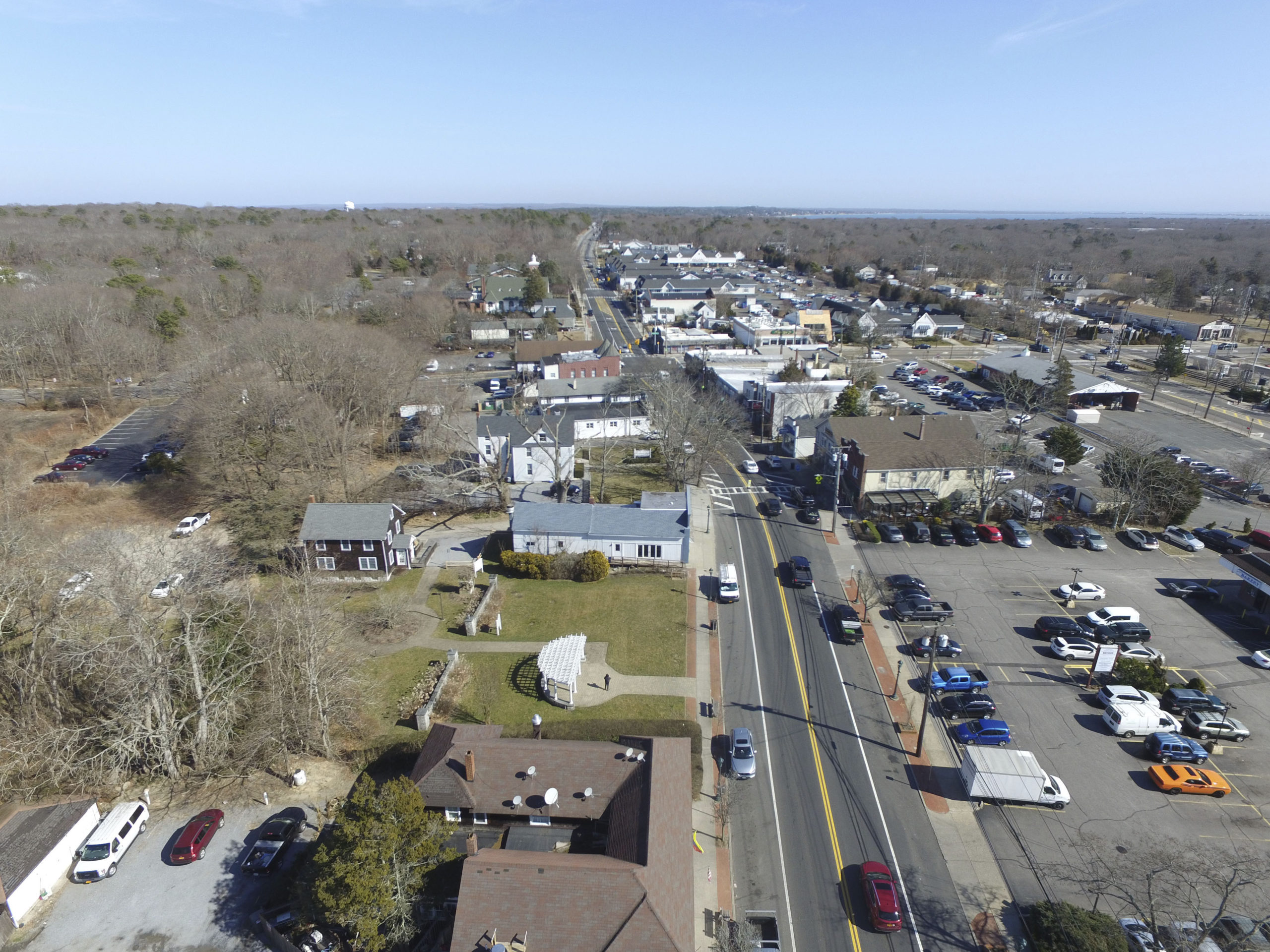
Just about a year ago, Hampton Bays resident Gayle Lombardi prevailed in court. She’d launched what’s known as an Article 78 legal proceeding looking to overturn Southampton Town’s 2020 adoption of the Hampton Bays Downtown Overlay District, and in a decision rendered in July 2021, State Supreme Court Justice Joseph Santorelli annulled the overlay district.
He cited inadequacies in the state environmental review and a deficiency in the density determination of the proposed new zoning district.
Santorelli’s decision allowed for an appeal, and during its June 14 meeting, members of the Southampton Town Board voted to hire the firm Nelson, Pope & Voorhis to redo the project’s analysis under the State Environmental Quality Review Act and provide engineering services.
They’ll pay the firm, which prepared some of the original overlay district documents including a market analysis, traffic impact study and Supplemental Generic Environmental Impact Statement, an amount not to exceed $209,600.
Councilman Rick Martel, whose store, Skidmore’s Sports & Styles, is located within the downtown overlay district’s boundaries, recused himself from the original vote to adopt the district and abstained last week.
Throughout a lengthy process toward adoption, town officials touted the zoning district as an answer to an ailing business district — it would create more opportunities for commerce and growth and craft a walkable downtown. But to Lombardi, the plan would “stuff” 13 square miles of projected development for the hamlet into the 45 acres of land — roughly from Springville Road on the west to around Ponquogue Avenue and Squiretown Road on the east, and from Good Ground Road to the south to Good Ground Park to the north — that make up the boundaries of the overlay district.
The build-out in the overlay district was far in excess of what was projected in the adopted 2013 Hampton Bays Corridor Strategic Plan, Lombardi asserted.
Santorelli found that since the overlay district is “clearly” part of the Strategic Plan, the town’s review failed to sufficiently evaluate the cumulative impacts of all phases of the plan.
Like Lombardi, the judge also looked askance at the extent of the town’s SEQRA review, one the town concluded before the state’s investigation into groundwater contamination in the Hampton Bays Water District had been completed. The overlay district was adopted just days after the board concluded a 10-year capital plan for the water district that outlined significant deficiencies in the water supply system overall and specific to the wells that would be supplying the district. The 10-year capital plan for the water district, while referenced in the town’s environmental review, was not included in the Supplemental Generic Environmental Impact Statement for the district required under SEQRA.
During the public comment period at the June 14 meeting, Lombardi, a Hampton Bays resident and CPA who taught herself how to write the legal paperwork, castigated the board for hiring a firm, “to correct the mistakes they potentially were responsible for making.”
“Not only shouldn’t you be paying them $200,000, they should be reimbursing you for the legal expenses that you’re incurring, because you’re making this to appeal,” she rebuked.
The town is racking up legal fees on a plan that is no longer relevant, she continued, “a plan that is mostly housing.”
A handful of property owners are looking to make money on increased density, increased apartments, she put forth.
Last fall, Alfred Caiola, a Hampton Bays resident, downtown property owner and principal of Manhattan-based Caiola Real Estate Group, appeared at a Town Board work session, along with design team members from Pittsburgh-based Urban Design Associates, to offer insight into his desires for the development of downtown, and support for getting the overlay district passed. He owns, through limited liability companies, most of the parcels of land that border Good Ground Park.
Caiola and his team presented a vision of Hampton Bays that, if realized, would create a walkable downtown replete with shops and two- or three-story buildings developed with cafes or retail on the ground floor and apartments on the second, all on a new road built between Main Street and the park.
Along the park frontage, there would be more residential uses.
Opponents to the overlay district expressed concern about adding increased housing density to the hamlet, the town’s most populated community. In a letter to the editor last summer, Lombardi reported existing zoning would allow for a total of 101 residential units, while the overlay district’s build-out table on the town website projects 248 housing units.
At the podium last week, the community activist recalled a quote from a litigator: “‘You really only sue when you have no recourse. You feel like somebody’s got their foot on your throat.’ And the way the HBDOD’s been handled for the past six years that’s how I feel … No matter what we said, you did what you wanted to do.”
Asked to comment on the appeal, Southampton Town Supervisor Jay Schneiderman said, via text message, “The rezoning of downtown Hampton Bays is a necessary step to revitalizing the hamlet center in line with the community’s vision. Without the new zoning, Hampton Bays is at risk of losing its identity as development occurs under commercial zoning not designed to produce a vibrant, pedestrian friendly downtown.”
Lombardi’s victory in court put the brakes on a plan predicated on the passage of the overlay — the controversial “relief valve” road proposed to create an extension of Good Ground Road. Proposed, then shelved, last year, the new road would run from the Flanders Road terminus at the Hampton Bays diner through the diner property south, then turn east along the Long Island Rail Road tracks and disgorge onto Good Ground Road at Springville Road. Beyond the stall created by the annulment, the plan was derided by community members who felt it would do little to ease traffic congestion in the hamlet.